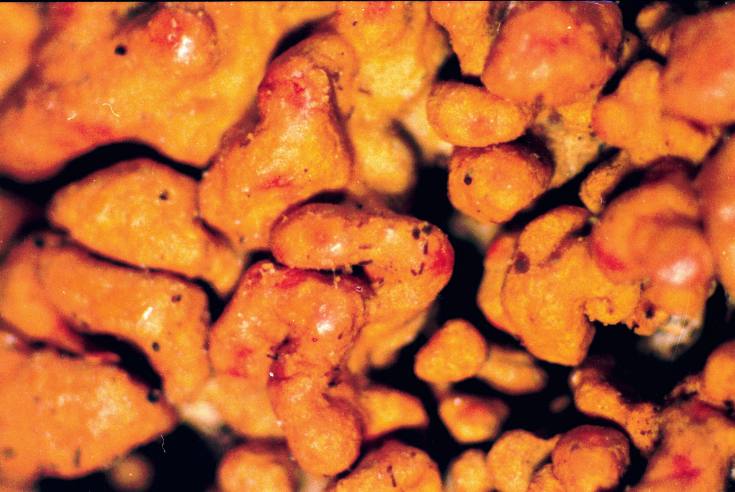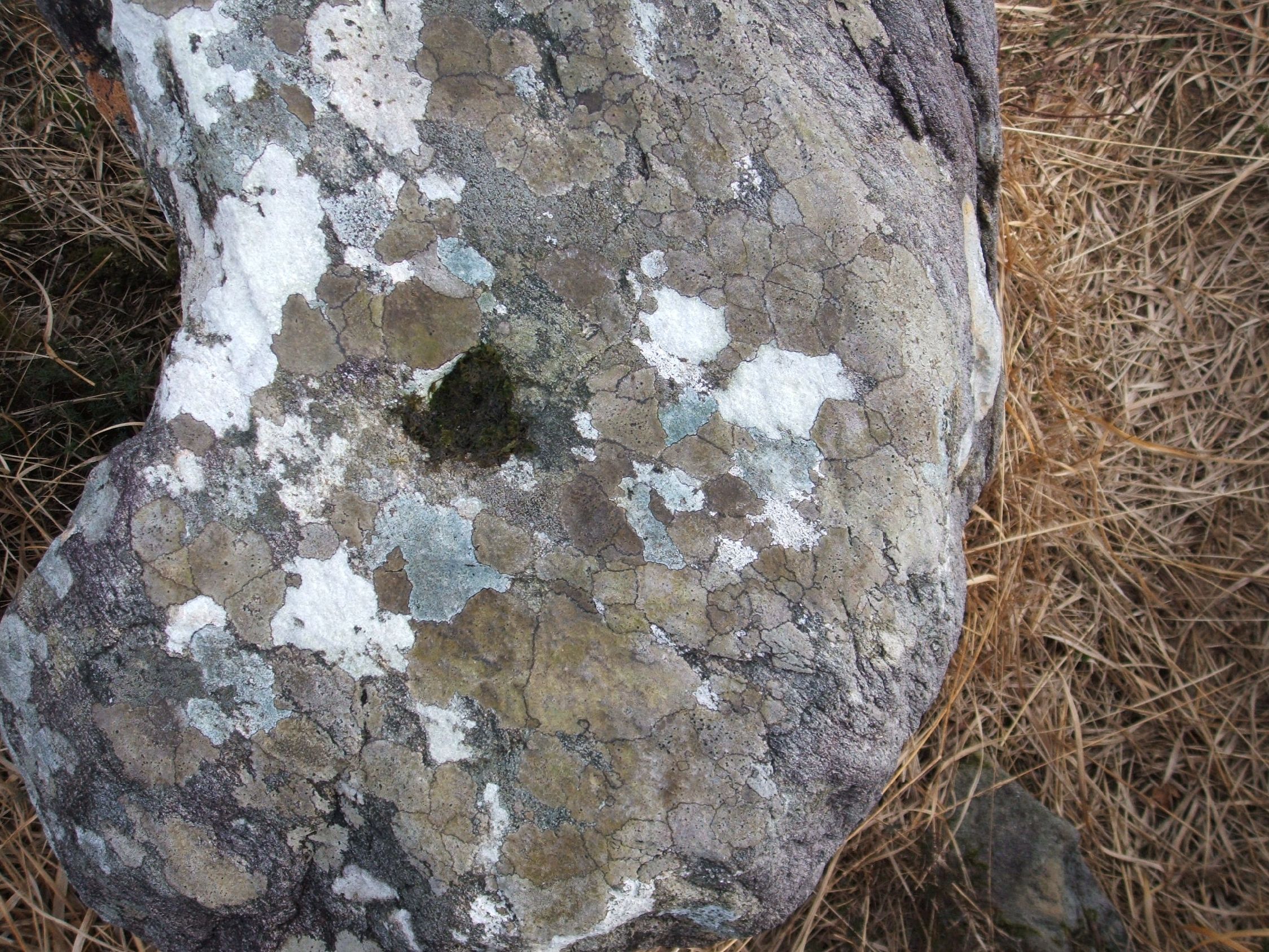|
Muellerella Pygmaea
''Muellerella pygmaea'' is a species of lichenicolous fungus in the family Verrucariaceae. It has a cosmopolitan distribution in Arctic-alpine areas and grows on the thallus and apothecia of a number of hosts. Host species for ''Muellerella pygmaea'' include: * ''Acarospora'' sp. * '' Acarospora smaragdula'' * '' Aspicilia calcarea'' * ''Candelariella aurella'' * '' Carbonea assentiens'' * ''Lecanora alpigena'' * ''Lecanora muralis'' * ''Lecanora polytropa ''Lecanora polytropa'', commonly known as the granite-speck rim lichen, is a species of saxicolous lichen in the family Parmeliaceae. A small, inconspicuous species that grows in the cracks of rock surfaces, it has a cosmopolitan distribution an ...'' * '' Lecidea grisella'' * '' Lecidea lapicida'' * '' Lecidea obluridata'' * '' Tephromela atra'' * '' Rhizocarpon geographicum'' * '' Rusavskia elegans'' References Verrucariales Fungi described in 1855 Taxa named by Gustav Wilhelm Körber Fungi of Iceland { ... [...More Info...] [...Related Items...] OR: [Wikipedia] [Google] [Baidu] |
Lecanora Muralis
''Lecanora muralis'' ''(Protoparmeliopsis muralis)'' is a waxy looking, pale yellowish green crustose lichen, crustose lichen that usually grows in rosette (botany), rosettes radiating from a center (placoidiod, placodioid) filled with disc-like yellowish-tan fruiting bodies (apothecia).Field Guide to California Lichens, Stephen Sharnoff, Yale University Press, 2014, , page 279 It grows all over the world.Lichen Flora of the Greater Sonoran Desert Region. Vol 2, Nash, T.H., Ryan, B.D., Gries, C., Bugartz, F., (eds.) 2001./ref> It is extremely variable in its characteristics as a single taxon, and may represent a complex of species. The fruiting body parts have rims of tissue similar to that of the main nonfruiting body (thallus), which is called being lecanorine. It is paler and greener than ''Lecanora mellea, L. mellea'', and more yellow than ''Lecanora sierra, L. sierrae''. In California, it may be the most common member of the ''Lecanora'' genus found growing on rocks (saxicolou ... [...More Info...] [...Related Items...] OR: [Wikipedia] [Google] [Baidu] |
Fungi Described In 1855
A fungus ( : fungi or funguses) is any member of the group of eukaryotic organisms that includes microorganisms such as yeasts and molds, as well as the more familiar mushrooms. These organisms are classified as a kingdom, separately from the other eukaryotic kingdoms, which by one traditional classification include Plantae, Animalia, Protozoa, and Chromista. A characteristic that places fungi in a different kingdom from plants, bacteria, and some protists is chitin in their cell walls. Fungi, like animals, are heterotrophs; they acquire their food by absorbing dissolved molecules, typically by secreting digestive enzymes into their environment. Fungi do not photosynthesize. Growth is their means of mobility, except for spores (a few of which are flagellated), which may travel through the air or water. Fungi are the principal decomposers in ecological systems. These and other differences place fungi in a single group of related organisms, named the ''Eumycota'' (''true fungi' ... [...More Info...] [...Related Items...] OR: [Wikipedia] [Google] [Baidu] |
Verrucariales
Verrucariales is an order of ascomycetous fungi within the subclass Chaetothyriomycetidae of the class Eurotiomycetes. Although most of the Verrucariales are lichenised, the family Sarcopyreniaceae consists of 11 species of lichenicolous (lichen-dwelling) fungi. Phylogenomic analysis suggests that the divergence between the lichenized Verrucariales and nonlichenized Chaetothyriales The Chaetothyriales are an order of ascomycetous fungi in the class Eurotiomycetes and within the subclass Chaetothyriomycetidae. The order was circumscribed in 1987 by mycologist Margaret Elizabeth Barr-Bigelow. Families and genera , Species ... occurred about 131 million years ago. Genera of uncertain placement There are some genera in the Verrucariales that have not been placed with certainty into any family. These are: *'' Botryolepraria'' – 2 spp. *'' Gemmaspora'' – 1 sp. *'' Kalbiana'' – 1 sp. *'' Merismatium'' – 10 spp. References Ascomycota orders Lichen orders ... [...More Info...] [...Related Items...] OR: [Wikipedia] [Google] [Baidu] |
Acta Botanica Islandica
''Acta Botanica Islandica'' was a scientific journal of botany published by the Icelandic Institute of Natural History in, and about, Iceland Iceland ( is, Ísland; ) is a Nordic island country in the North Atlantic Ocean and in the Arctic Ocean. Iceland is the most sparsely populated country in Europe. Iceland's capital and largest city is Reykjavík, which (along with its s .... It was established in 1972. The 15th and last issue was published in 2011. It was primarily an English language publication, but French and German language papers have been published. History ''Acta'' replaced the botany journal ''Flóra'' which was published between 1963 and 1968. It addressed a lack of publications in Iceland about Icelandic botany. The first editor was Hörður Kristinsson. References External links * Botany journals Magazines published in Iceland 1972 establishments in Iceland Publications established in 1972 Publications disestablished in 2011 Defunct jour ... [...More Info...] [...Related Items...] OR: [Wikipedia] [Google] [Baidu] |
Rusavskia Elegans
''Rusavskia elegans'' (formerly ''Xanthoria elegans''), commonly known as the elegant sunburst lichen, is a lichenized species of fungus in the genus ''Rusavskia'', family Teloschistaceae. Recognized by its bright orange or red pigmentation, this species grows on rocks, often near bird or rodent perches. It has a circumpolar and alpine distribution. It was one of the first lichens to be used for the rock-face dating method known as lichenometry. Taxonomy ''Rusavskia elegans'' was first formally described by Johann Heinrich Friedrich Link as ''Lichen elegans'' in 1791, and transferred to the genus ''Xanthoria'' by Theodor Magnus Fries (son of Elias Magnus Fries) in 1860. In 2003, Sergey Kondratyuk and Ingvar Kärnefelt transferred the taxon to their newly circumscribed genus ''Rusavskia'', in which it is the type species. Although the new genus was not initially widely accepted, subsequent molecular phylogenetic studies showed the validity of the new classification. Description ... [...More Info...] [...Related Items...] OR: [Wikipedia] [Google] [Baidu] |
Rhizocarpon Geographicum
''Rhizocarpon geographicum'' (the map lichen) is a species of lichen, which grows on rocks in mountainous areas of low air pollution. Each lichen is a flat patch bordered by a black line of fungal hyphae. These patches grow adjacent to each other, leading to the appearance of a map or a patchwork field. When circular, or roughly circular, the diameter of this lichen species has been widely used to help determining the relative age of deposits, e.g. moraine systems, thus revealing evidence of glacial advances. The process is termed lichenometry. This technique is generally attributed to the work of Roland Beschel in the Alps. Lichenometry is based on the assumption that the largest lichen growing on a rock is the oldest individual. Generally, the five largest lichen thalli diameters are taken, although several statistical methods have been used. If the growth rate is known, the maximum lichen size will give a minimum age for when this rock was deposited. The growth rate curve, a g ... [...More Info...] [...Related Items...] OR: [Wikipedia] [Google] [Baidu] |
Tephromela Atra
''Tephromela atra'' is a species of lichen in the family Tephromelataceae. It has a worldwide distribution. Synonyms ''Tephromela atra'' has many synonym since many previously described species have been reclassified as ''T. atra.'' These include ''Lecanora atra'', ''Lecidea atroides'', ''Lichen ater'', ''Parmelia atra'', '' Patellaria atra'', ''Psora atra'', ''Rinodina atra'', ''Scutellaria atra'' and ''Verrucaria ''Verrucaria'' is a genus of lichenized (lichen-forming) fungi in the family Verrucariaceae. Taxonomy The genus was circumscribed by German botanist Heinrich Adolph Schrader in 1794, with '' Verrucaria rupestris'' assigned as the type species. I ... atra''. References Lecanorales Lichen species Lichens of Malesia Lichens described in 1762 Taxa named by William Hudson (botanist) {{Lecanorales-stub ... [...More Info...] [...Related Items...] OR: [Wikipedia] [Google] [Baidu] |
Lecidea Obluridata
''Lecidea'' is a genus of crustose lichens with a carbon black ring or outer margin (exciple) around the fruiting body disc (apothecium), usually (or always) found growing on ( saxicolous) or in (endolithic) rock.Field Guide to California Lichens, Stephen Sharnoff, Yale University Press, 2014, Lichens that have such a black exciple are called lecideine, meaning "like ''Lecidea'', even if they are not in this genus. Members of the genus are commonly called disk lichens or tile lichens. Selected species According to the ''Dictionary of the Fungi'' (10th edition, 2008), the widespread genus contains an estimated 427 species. * ''Lecidea atrobrunnea'' * ''Lecidea hassei'' * ''Lecidea keimioeensis'' * ''Lecidea laboriosa'' * ''Lecidea lithophila ''Lecidea'' is a genus of crustose lichens with a carbon black ring or outer margin (exciple) around the fruiting body disc (apothecium), usually (or always) found growing on (saxicolous) or in (endolithic) rock.Field Guide to California ... [...More Info...] [...Related Items...] OR: [Wikipedia] [Google] [Baidu] |
Lecidea Lapicida
''Lecidea lapicida'' is a species of lichen in the family Lecideaceae. It has a worldwide distribution but it is rare in the tropics. ''Lecidea lapicida'' is a known host species to the lichenicolous fungus species '' Muellerella erratica'', ''Muellerella pygmaea ''Muellerella pygmaea'' is a species of lichenicolous fungus in the family Verrucariaceae. It has a cosmopolitan distribution in Arctic-alpine areas and grows on the thallus and apothecia of a number of hosts. Host species for ''Muellerella p ...'' and '' Rhizocarpon furax''.'' See also * List of ''Lecidea'' species References lapicida Lichen species Lichens described in 1799 Taxa named by Erik Acharius {{Lecanoromycetes-stub ... [...More Info...] [...Related Items...] OR: [Wikipedia] [Google] [Baidu] |
Lecidea Grisella
''Lecidea'' is a genus of crustose lichens with a carbon black ring or outer margin (exciple) around the fruiting body disc (apothecium), usually (or always) found growing on ( saxicolous) or in (endolithic) rock.Field Guide to California Lichens, Stephen Sharnoff, Yale University Press, 2014, Lichens that have such a black exciple are called lecideine, meaning "like ''Lecidea'', even if they are not in this genus. Members of the genus are commonly called disk lichens or tile lichens. Selected species According to the ''Dictionary of the Fungi'' (10th edition, 2008), the widespread genus contains an estimated 427 species. * ''Lecidea atrobrunnea'' * ''Lecidea hassei'' * ''Lecidea keimioeensis'' * ''Lecidea laboriosa'' * ''Lecidea lithophila ''Lecidea'' is a genus of crustose lichens with a carbon black ring or outer margin (exciple) around the fruiting body disc (apothecium), usually (or always) found growing on (saxicolous) or in (endolithic) rock.Field Guide to California ... [...More Info...] [...Related Items...] OR: [Wikipedia] [Google] [Baidu] |
Lecanora Polytropa
''Lecanora polytropa'', commonly known as the granite-speck rim lichen, is a species of saxicolous lichen in the family Parmeliaceae. A small, inconspicuous species that grows in the cracks of rock surfaces, it has a cosmopolitan distribution and has been recorded on all continents, including Antarctica. Taxonomy It was originally described by German botanist Jakob Friedrich Ehrhart in 1796 as a species of ''Verrucaria''. Gottlob Ludwig Rabenhorst transferred it to the genus ''Lecanora'' in 1845. It is commonly known as the granite-speck rim lichen. Description ''Lecanora polytropa'' has a scanty thallus, which sometimes resembles tiny pale yellowish areoles. The tiny, flat apothecia typically measure 0.3–0.9 mm in diameter and may be scattered or clustered together. They have a waxy texture and are yellow to pale orange, lacking pruina. The margins of the apothecia are smooth, not prominent, and tend to be lighter in colour than the central disc. Ascospores are el ... [...More Info...] [...Related Items...] OR: [Wikipedia] [Google] [Baidu] |




.jpg)